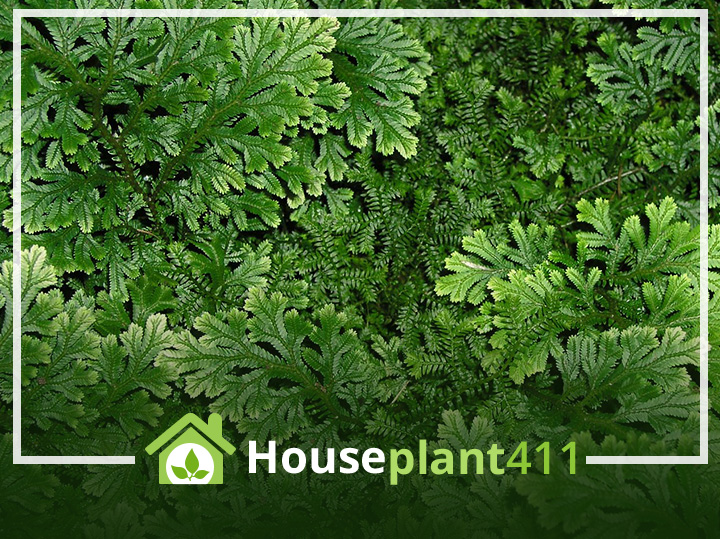There are about 700 varieties of a Selaginella plant which are often referred to as Spike Moss or Arborvitae Ferns. Selaginella plants are very diverse in their size and in the manner in which they grow. Many types of a Selaginella plant can be found growing wild in tropical America, Asia, China, Japan, North America, Mexico, South Africa and Australia. A Selaginella plant, depending upon the variety, may be a creeping, climbing, or trailing plant. Selaginella kraussiana, which is also called Spreading Club Moss or Trailing Moss, grows about ½ inch high and has a limitless spread. S. kraussiana has very small bright green leaves that overlap on trailing jointed stems. Selanginella martensii is a small bushy plant that grows about 7-9” tall and just as wide. S. martensii has thick, multi-branched stems filled with small green leaves. When S. lepidophylla, a native of desert and semi-desert regions, doesn’t get enough water, the leaves roll into tight brown balls (a phenomenon known as cespitose) and the plant becomes totally dormant. Once this Selaginella gets some moisture, the leaves open up, turn green, and the plant starts to grow again. This is why the Selaginella lepidophyllagets is called the “Resurrection Plant.” Keep an eye out for mealybugs and spider mites that can hide in the leaves.
Plant Care
Light
Light requirements depend upon the variety of Selaginella. Bright indirect light indoors, partial shade outdoors is usually a good idea for most Selaginella varieties.
Water
Keep the soil moist but never soggy and avoid using cold water. A Selaginella plant becomes totally dormant and the leaves roll into tight little brown balls when there is no moisture. Once the Selaginella is watered, it turns green and starts to grow again.
Fertilizer
A Selaginella plant needs very little plant food. Feed twice a year, once in April and once in July, with a water soluble fertilizer diluted to ½ the recommended strength. Do not fertilize newly potted Selaginella plants for at least two months.
Temperature
Best temperature 50°-75°F (10°-24°C ). Some types of Selaginella plants can handle temperatures as low as 40°F (4.4°C)
Humidity
Spike Moss or Selaginella plants like high humidity.
Pests
Most frequent plant pests are mealy bugs and spider mites.
Soil
Use a peat moss based soil that retains water but still drains well for a Selaginella plant.
Pruning
Pinch back the tips of the stems of a Selaginella plant if they grow too tall or leggy. Pruning stimulates new growth and helps the plant become bushier. Remove dead or damaged stems as soon as they appear.
Propagation
In nature, a Selaginella plant is propagated by spores. At home or in the greenhouse, we usually propagate a Selaginella by plant division or stem cuttings.
Resting Period
Reduce water in the winter and protect a Selaginella from cold drafts and wind.
Poisonous Plant Info
A Selaginella is a non-poisonous houseplant.
FAQ
There are several reasons why leaf tips turn brown and dry so you’ll have to pick the one that might apply to your situation: Too much fertilizer, fertilize only twice a year and dilute the food to ½ the recommended strength. Too much or too little water. Lack of humidity, place the plant on a tray of wet pebbles. Too many chemicals in the water.
Limp leaves usually mean that the plant is sitting in a cold draught. Now that the weather has changed, is there cold air coming in the window?
I’d recommend Selaginella kraussiana, another name for it is variegated trailing Spike Moss. It looks great in a hanging basket.
Some types of Selginella look more like a moss but they are really more closely relayed to ferns. Both ferns and selaginella reproduce by spores rather than seeds like most plants.
I think you might have a selaginella variety called “Aurea.” It has yellow leaves.

